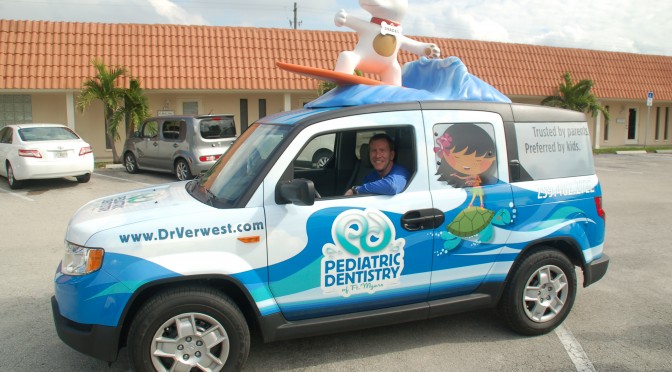Pediatric Dentistry of Ft. Myers sponsors Future of Art 2016
For the second consecutive year Pediatric Dentistry of Ft. Myers, Dr. Tim Verwest, DMD will be the exhibit sponsor for Future of Art at the[…]
Proper Brushing and Maximizing the Benefits of Braces
Brushing Your Teeth With Braces While you’re undergoing orthodontic treatment, you should see the orthodontist approximately once a month. He or she will check the[…]
Flossing Essentials for Teens
Flossing Essentials for Teens Oral care is important for children of all ages, including teens, who may be the least likely to brush and floss[…]
Make Flossing Fun for Kids
Tips To Remember To Make Flossing Fun For Kids To get kids into the habit of daily flossing as part of a good oral care[…]
Make Oral Care Cool for Kids and Teens
Making Oral Care For Kids Cool As kids come into their own, they’re more conscious than ever of how their bodies are changing. And that[…]
Dental Hygiene Tips for Kids
Dental Hygiene Tips For Kids One of the best ways to prevent tooth decay in children is to get them enthusiastic about daily dental hygiene.[…]
Making Kids Comfortable With Oral Care
Dental Care Dental care plays an important role for health and appearance, both in childhood and throughout adult life. Preventative dentistry is so good these[…]
Brushing teeth: for kids, toddlers, and babies
It’s never too early to get children in the habit of good oral care. Of course, it’s up to parents to take the “first steps.”[…]
What You Need to Know About Cleft Lip and Palate
Every year, about 4,440 babies in the United States are born with a cleft lip, according to the CDC. About 2,650 are born with a[…]

Local Dentist Recognized as America’s Best Dentist for 2016
The National Consumer Advisory Board has named Pediatric Dentistry of Ft. Myers, Dr. Tim M. Verwest, DMD one of America’s Best Dentist for 2016. Selections[…]
